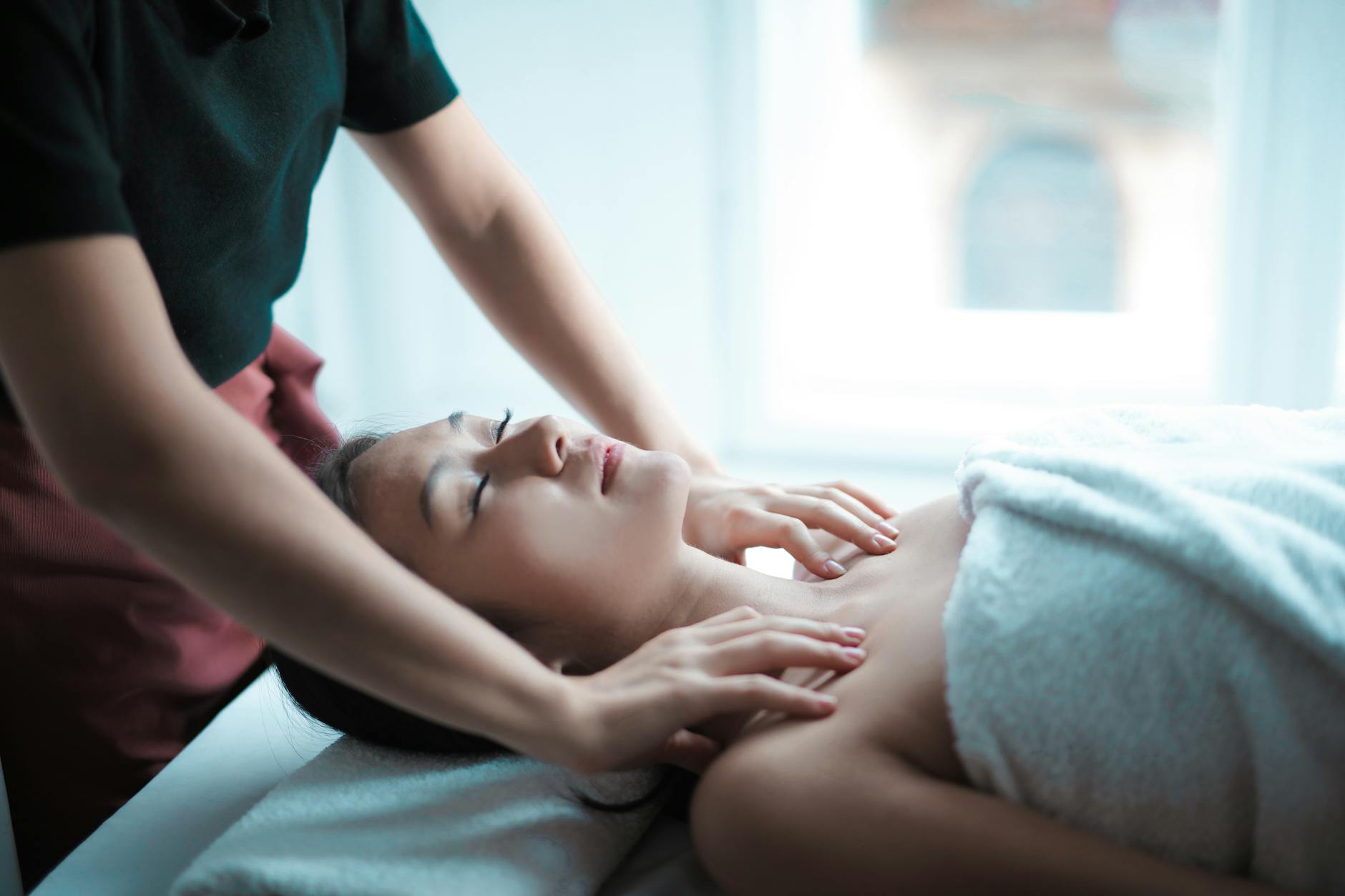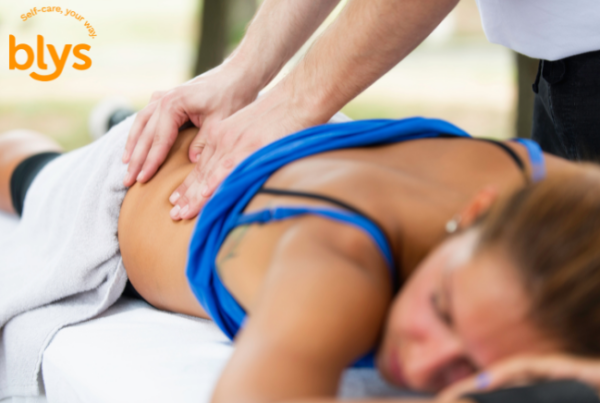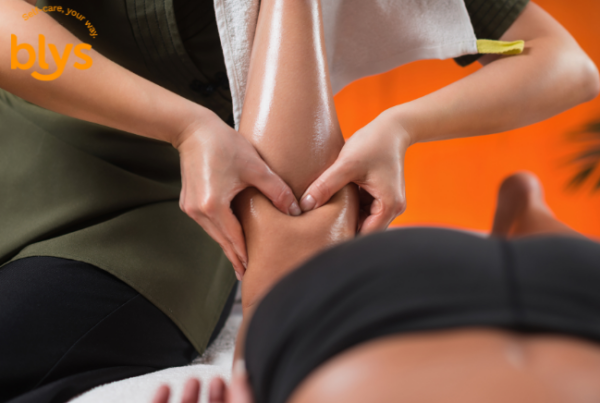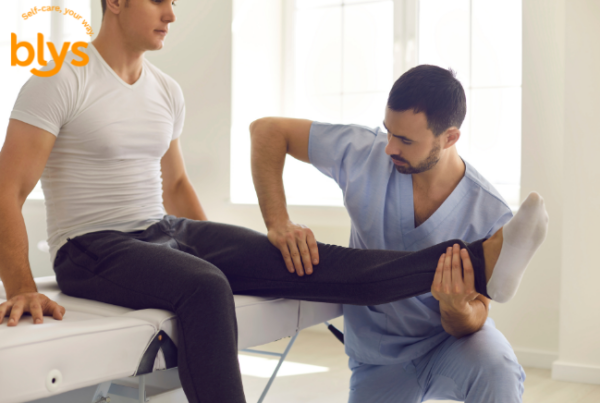Back pain, and particularly lower back pain, can be caused by pretty much anything. Some are self-inflicted, like wearing bad shoes, carrying a heavy bag, or poor posture. Others are out of our control, such as health conditions. Afflictions like scoliosis, fibromyalgia, sciatica and osteoporosis can be debilitating.
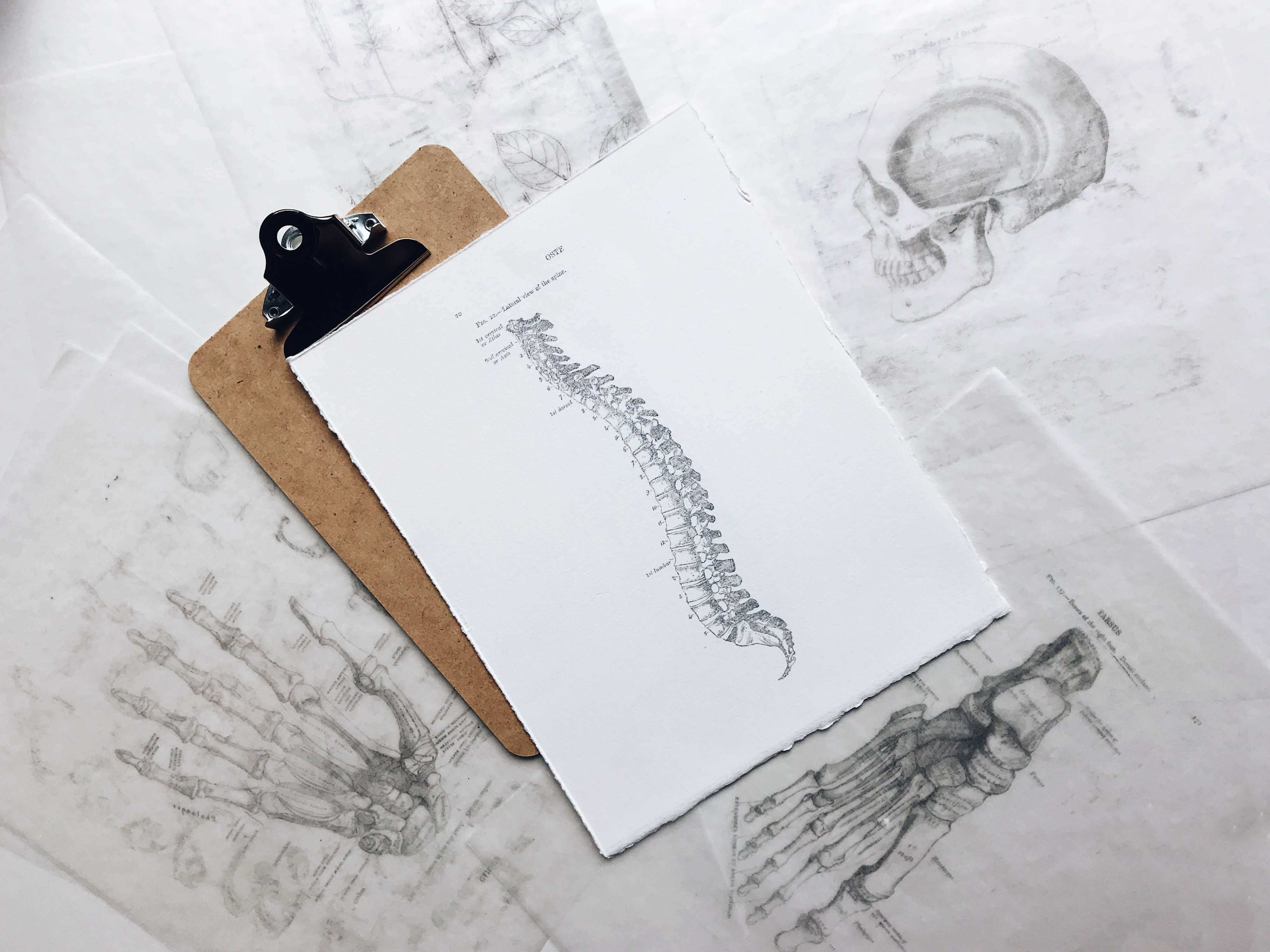
As the story often goes, it’s not until we’ve hurt something that we realise how much we use it. This is true for critical joints and muscles along the spine like our lower and upper back, shoulders and neck. Everything stems from the spine, so if your back is sore, everything can be sore.
Ways To Relieve Lower Back Pain
Everyone has different remedies and so-called “cures” for back pain. Our advice is to always exercise caution when someone suggest to you with an off-the-wall back pain remedy. Everybody is different which means there is rarely (if ever) a solution that will work for everyone. In saying that, there are some recommendations that can prove helpful in certain situations.
-
Ice
Ice is most commonly used as a fix for muscle strains. It aims to relieve swelling and reduce inflammation. Athletes using ice baths is an example, as it supposedly improves recovery time. Ice will not repair or heal damaged ligaments, muscles or joints if these are factors of your lower back pain.
-
Pain killers
Pain killers are a quick fix. They do not address the cause of any issue regarding pain. Painkillers will get you from A to B while you use other ways to fully address what is giving you the root issue. They’re simply a mask to provide you with temporary relief.
-
Heat packs
Heat packs are the opposite of using ice. They can be used to relax cramping muscles and spasms by promoting blood circulation.
-
Compression bandages
Wrapping muscles in compression bandages aim to reduce swelling by hindering muscle movement and to keep fluid from gathering at the injury site. Compression bandages can also be used to train and strengthen muscles, especially when adjusting posture. These are also used for the management of blood circulation.
-
Warm bath
This works similar to heat packs and is great for those days where your back has just had enough. A warm bath with Epsom salts is wonderful for relaxation, both of the mind and muscles. Be warned though – once you get out and start moving, the relief might wear off.
-
Stretching
Stretching is a tricky one. It’s important to know what you’re doing and how you are affecting your muscles when stretching. In some cases, stretching is not recommended for a sore back at all, especially if you are not entirely sure what is causing the problem. For example, if you have a damaged muscle, stretching the wrong way (or stretching at all) could exacerbate damage and result in further injury, like tears and micro-trauma.
-
Massage
A trained and qualified massage therapist knows the mechanics of the human body. Having a professional available to locate and release tension in your body is fantastic news for everyone. Massage for the lower back is frequently requested of Blys therapists as it is such a common site for pain.
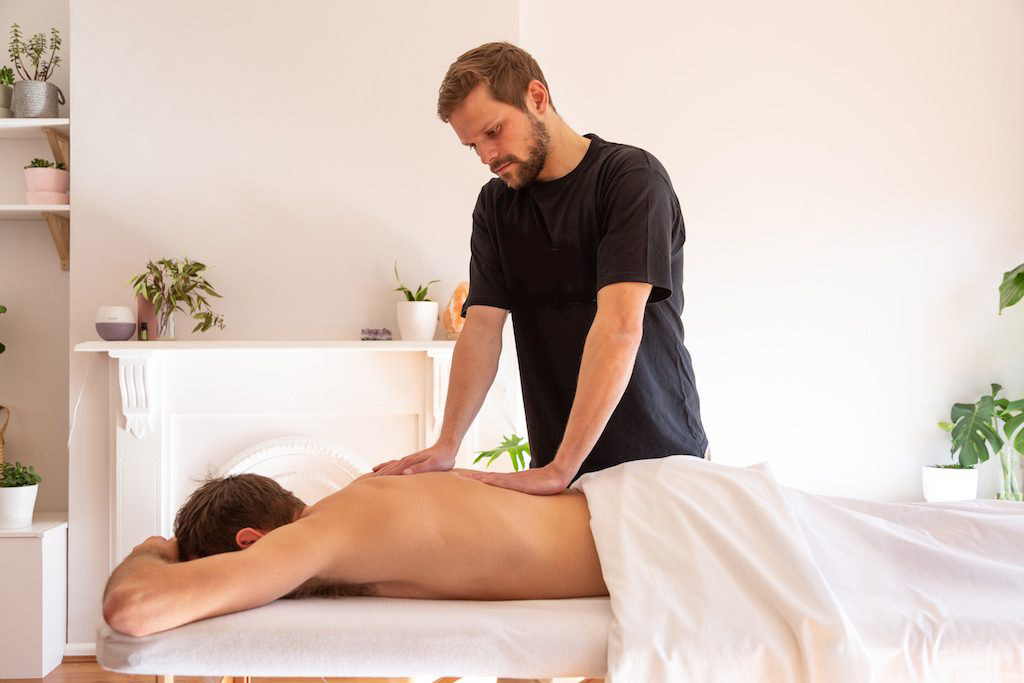
Not all lower back pain is caused by activity. In fact, studies have shown that a large proportion of those who suffer from a chronically sore back are actually employed in sedentary jobs – office workers, businesspeople, and other corporate occupations. Long periods of remaining static can be just as bad for your back, if not worse, than labour jobs that require heavy lifting and movement.
3 Ways Massage Eases Back Pain
Our lower back is responsible for holding over half of the body’s entire weight. It is where our centre of gravity is found because it is at the base of the spine, supporting the hips and shoulders.
1. Encouraging blood circulation
When done correctly by a trained and qualified therapist, massage promotes and improves blood circulation throughout the body. Stimulating the muscles and tissues surrounding sore areas brings fresh, oxygenated blood to the source of inflammation, stiffness or pain. This encourages healing by flushing the area.
Massage also helps to move fluid around the body to stop it collecting at the site of pain. Fluid build-up is what causes swelling. By gliding over the muscles, your massage therapist can significantly reduce swelling, or even prevent it altogether.
2. Decreasing tension in the muscles
Relax, revitalise, restore. These are the 3 R’s of massage therapy, no matter which style you prefer. Massage is a form of muscle manipulation. Your massage therapist uses various pressures and techniques to soothe the muscles. When muscles are relaxed, they can be worked back into optimal shape and condition.
Decreasing tension around the injury site not only provides relief from pain, but speeds up the healing process. A good massage therapist won’t just focus on the specific trouble area, but will also include the surrounding muscles and connective tissues as well. This ensures that all affected muscles have been addressed.
3. Increased endorphins
The truth is that lower back pain can be incredibly stressful. Pain is always inconvenient, but when it’s located somewhere as crucial as the body’s centre of gravity, performing even basic tasks becomes a challenge. Massage has been scientifically proven to increase endorphins – feel-good chemicals in the body.

Massage relaxes the mind just as much as the body. When your mind is in a state of calm, the body will follow, and vice versa. A positive outlook is an important step in recovery, and your mental health should never be neglected. We know that being in pain is miserable. Massage is a genuine form of healing that unifies your body and brain, providing you with a complete wellness experience.
Massage Styles For Back Pain
When you’re dealing with pain, it’s crucial to know which kind of massage is suited for you. There are many different styles of massage, including variations of relaxation and remedial massage. Balancing pressure, style and techniques is the formula for getting the most out of your massage.
Remedial Deep Tissue massage
Deep tissue massage is a form of remedial massage. Based on the client’s tolerance, strong and variable pressure is used on the affected muscles. Strokes are usually long and slow. Deep tissue massage is the go-to massage style for those experiencing chronic pain or afflicted by an injury, old or new.
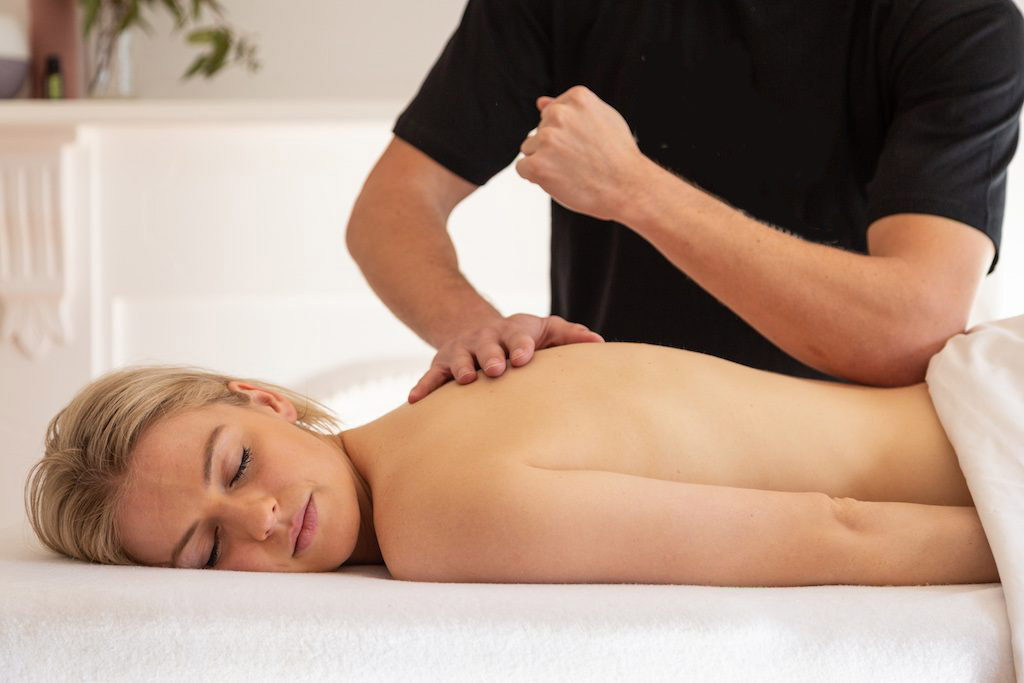
Your deep tissue massage therapist will employ parts of their upper body to work the muscles correctly. This includes palms, fingers, thumbs, elbows and forearms. This means that each muscle can be fine-tuned, so don’t be intimidated if your therapist tells you they’re going in with their knuckles next.
You can read up on the difference between deep tissue and relaxation massage to find out which style you may prefer.
Specialised Sports massage
Sports massage is a specialised type of massage therapy that is favoured by athletes, labourers, and people who are active in their daily lives. Sports massage is will generally target specific areas that need work, including the lower back, upper back, shoulders, neck and limbs.
A sports massage is preferred by athletes because it is, essentially, muscle training. It addresses pain, reduces stiffness and tension, encourages flexibility, improves mobility and speeds up the healing process. Typically, sports massage is incorporated into a larger wellness routine. However, it is also a great form of massage therapy as a one-off or to get targeted relief from pain and stiffness, including in the lower back.
Check out our guide to Sports massage for more information.
How to Maintain Good Back Health
After your massage, it’s important to maintain all the good things your massage therapist has done. If you know you’ve got a bad habit of slumping, or you hold a lot of tension in your body, you need to be aware of this and make a conscious effort not to fall back into old patterns. Your massage therapist can help in this department by directing you to good posture and incorporating useful stretches into your maintenance routine.

However, you can’t just rely on your massage therapist. It’s important to take your own steps to ensure good lower back health. Things you can do include:
- Invest in good shoes (if you’re walking a lot)
- Optimise your desk set up to make it more ergonomic
- Research support belts or posture bands if you have a weak core
- Get regular massages to address problems before they arise
- Listen to your body – don’t just use painkillers as a long-term treatment!
Putting your trust into a professional home massage therapist is easy with the security of a platform like Blys. Every available massage therapist is trained, qualified, thoroughly vetted, and passionate about helping people. If you’re experiencing lower back pain, or any other kind of pain, massage can get you on the path to recovery. Or, if you’re just looking to relax, we can help you with that, too.
Book a massage today, and feel better tomorrow.

